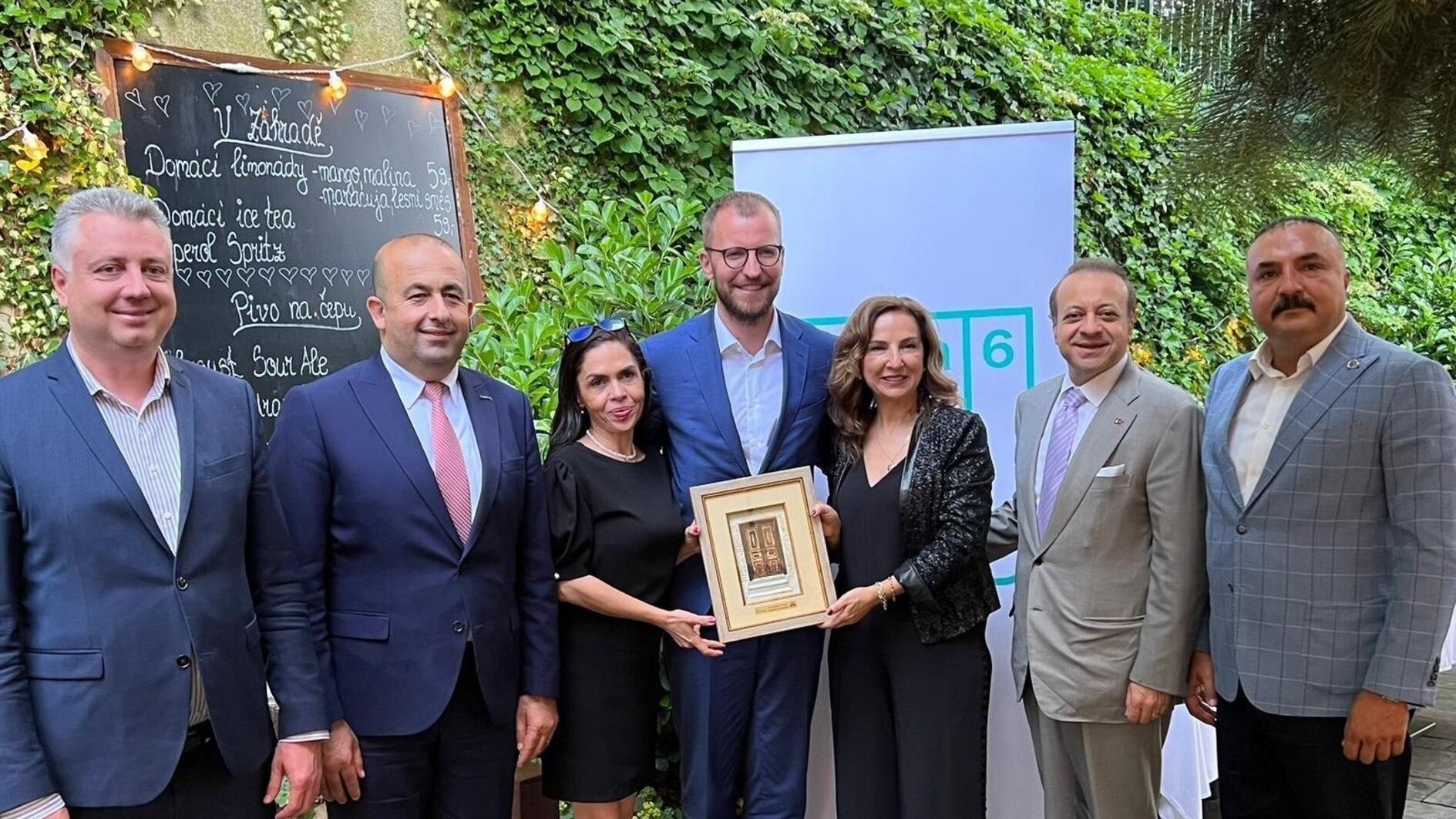The ‘green gold’
I remember vividly the moment. When Robin Weir, author of “Ice Creams, Sorbets and Gelati: The Definitive Guide,” told me that exact sentence, “They put food color to pistachio ice cream to make it fluorescent green, but pistachio is never green.” This was my moment. I jumped in and said, “You’re both right and wrong! Yes, in most countries they put artificial color to pistachio ice cream, but pistachio is green, very green indeed!”
I luckily had my proof with me. It was a tea break at the Oxford Food Symposium and I had brought along a few boxes of fıstık ezmesi, pistachio paste which is sort of a marzipan made with pistachios instead of almonds, as a present to friends. I rushed to my room, and within a few seconds, I proudly presented the greenest pistachio morsels to Robin. Needless to say it was an instant hit.
I doubt if I can repeat this scene again with the skyrocketing pistachio prices nowadays. Pistachio is the most expensive nut in Turkey, especially the greenest early harvest ones, which is much sought for sweets, in particular for baklava. It is like a precious gem for the sweet makers in Gaziantep, the town that is considered as the gastronomic capital of Turkey and listed as a city of gastronomy in the UNESCO Creative Cities Network.
Antebis like to call their beloved gem “green gold.” They know that they own the best pistachios on the planet. Now there is a museum dedicated to pistachios, with a fun and entertaining interactive display, explaining all aspects of the nut from orchards to tables. However, the opening of the museum was overshadowed by the excitement of the pistachio creations by world-recognized chefs. The Gaziantep International Gastronomy Festival, GastroAntep, organized by Gaziantep Metropolitan Municipality and masterminded by Gökmen Sözen, hosted 40 star chefs from around the globe, all experimenting with local ingredients and products, needless to say mostly using pistachios.
The star of the pistachio lovers must have been Christian Escribà from Barcelona, who could well be the most well-known patisserie chef of Spain. Fourth generation in the family business, he is famous for creating fun sweets like the edible candy rings and the Dali inspired raspberry truffle red lips. He took the call of Gaziantep very seriously and created at least half a dozen exquisite pistachio sweets. His wildly imaginative creations included a pistachio hot-dog, actually a sausage-shaped sweet pistachio mousse tucked in a sweet bun, with mustard and ketchup looking raspberry and custard sauces, and a sweet guacamole, getting its greenness not from avocados but from pistachios, coloring and flavoring a creamy custard to be used as a sweet dip. After an array of other pistachio-centric concoctions such as pistacella, a pistachio-based white chocolate spread; the hit was pistachio-eat-all, morsels of pistachio with edible shells. The shells are molded white and milk chocolates, glued to a green pistachio by sugar paste to create an exact replica of a pistachio in a shell.
The variations of chefs were endless. Ricard Camerena from Valencia made a cross between a Turkish baklava, and a sublime dessert, actually borrowing the upper crust of a slice of carrot-shaped baklava from Güllüoğlu. Young talents Joanna Artieda and David Gill from Xô-kô-la in Barcelona took a different approach. They looked at the Turkish desserts and were inspired by the traditional favorites baklava and Turkish delight. They made their own versions, of course, completely different but also very reminiscent of the iconic sweets. Their baklava was as light as a pillow, inflated by the vapor created by the water within the butter smeared in the sealed pastry. The hollow baklava shaped crisp pastry case was then filled with an airy mousse of pistachio and the morsel was brushed with pistachio honey. This last ingredient was a mind-blowing imagination alone, the outer skin around the shells were macerated in sugar for several months, all the moisture within the skins driven out to create a honey-like syrup, and this piney pistachio honey was used instead of the usual sugar syrup.
After a two-day marathon of watching pistachio creations, I can easily say that the green gold of Antep will soon be the jewel on the crown of world high cuisines, finally achieving global recognition by star chefs.
Recipe of the Week:
This is a recipe from my book “A Taste of Sun and Fire: Gaziantep Cookery.” Katmer is made from tissue-thin pastry with a filling of pistachios, sugar and cream. It is a popular breakfast dish. The morning after a wedding, the groom’s family sends katmer to the bride’s family. In Gaziantep pastry cooks stretch the pastry by swirling it in the air several times. This is a move that takes years to master. Of course, the inexperienced can stretch the dough and roll it out as thinly as possible, or even easier, if you find it difficult to stretch or roll out the pastry for katmer you can use ready-made yufka or filo, choosing the thinnest you can find. If you’re keen on preparing the dough yourself, mix 300 g flour, 2/3 cups water and a generous pinch of salt, and knead vigorously by hand to make a soft dough. Divide into two balls and oil the balls with a little neutral vegetable oil, cover with a damp cloth and leave aside for an hour. Take one of the balls and press out into a circle with your hands. Roll out as thinly as possible with a rolling pin, sprinkling with plenty of flour. Then holding the pastry at the edge with the right hand, swirl it in the air, keeping the left hand underneath to prevent it folding over. Repeat this several times, holding a different part of the edge each time, until you have a paper-thin circle. Lay it on a greased surface and brush with a little oil. Fold the four edges over to the center to form a square. Mix 2 tablespoons each of pistachios and sugar and sprinkle half over the pastry square. Take 100 g cream and dollop at intervals over the nuts. Fold the corners into the center. Brush a little oil over and arrange on a baking sheet. Repeat the process with the rest of the dough. Preheat your oven to 230° and bake for around 10-15 minutes until golden brown. Cut into four squares and serve hot.
Fork of the Week:
When in Gaziantep I always have pistachio goods from Orkide Patisserie and visit the owner, my friend Mustafa Özgüler. Everything they do with pistachios are exquisite, I cannot decide what to choose. Their macaroon-like pistachio cookies are out of this world, and do not leave the town without tasting their katmer which is probably the best ever.
Cork of the Week:
With all the pistachio-laden sweets a sweet wine with deep nutty flavors will work best. Arcadia Sauvignon Blanc Late Harvest 333 from Thrace is my pick this week, it is the only wine produced with noble rot Botrytis in Turkey, so expect a luscious Tokaji-like aroma. This semi-sweet gem used to come only in 37,5cc bottles, now rumor is that the 2015 vintage will be available in 50cc bottles by December this year. If you want to invest on sweet wines before Christmas, watch out to grab a few for the festive period ahead.












